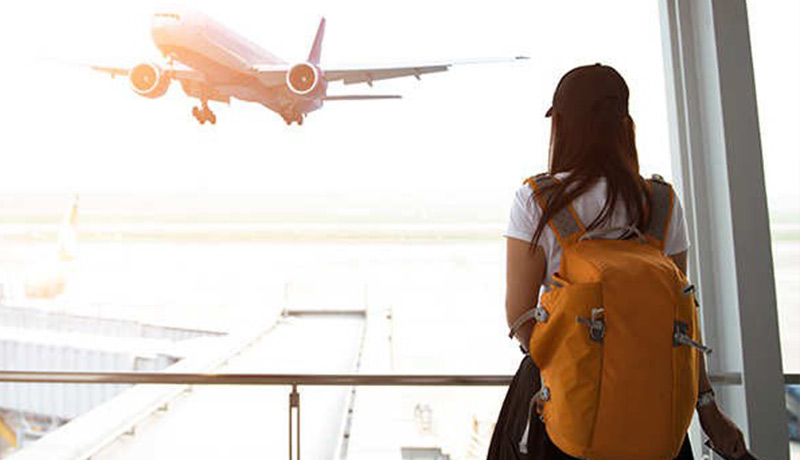
By Emma Shakespeare, MENA South Director at SAP Concur
Business travel has come to a halt during the COVID-19 pandemic, as stay-at-home restrictions have required companies to hold more virtual meetings. While the outbreak is not yet over, experts have started to project a rebound for corporate travel.
As travel begins to resume, the prospect of taking a business trip has become a daunting task for many travellers whose main worry remains to stay safe.
While the duty of care has always been high on corporate agendas for many travel managers, the crisis has put it squarely at the top, forcing them to rethink the way they support travellers away from the office environment.
Our extraordinary times hit business travel harder than anything anyone has ever experienced before. But out of adversity comes opportunity. The pandemic has been the catalyst for introducing robust duty of care and safety measures into businesses’ corporate travel programmes, which will ultimately benefit their travelling employees’ wellbeing in the long term.
So, as companies begin to plot the course ahead, businesses need to re-look at their current travel practices and evaluate how they can meet their duty of care obligations for their employees and customers.
From disparate bookings to flight delays, a business trip had the potential of being complicated even before our 2020 health and safety challenges. Employees have never been keen to deal with any added stress and want to feel safe while doing their jobs. Since safety has become a moving target, businesses now need to adapt and to move with it — which means they also need to change.
A recent survey commissioned by SAP Concur found that 96% of business travellers identified at least one measure they consider to be critical for their company to implement when travel resumes, and 18% say they’ll look for a new role, inside or outside the company, that does not require travel if measures aren’t implemented. Despite that, travellers ranked “excitement” second when asked about feelings on a return to travel, showing there is still appetite for travelling – if it’s done safely.
As a result, businesses need to look at new tools and practices they can implement to help navigate the ‘new normal’ of travel. First, businesses should consider referencing the latest public health and safety advisories, travel provider cancellation policies and new travel guidelines from their local governments.
Additionally, there are new features in the TripIt Pro app available to travellers that allow them to access Neighbourhood Safety Scores’ — which surfaces safety scores from 1 to 100 for neighborhoods around the world, representing low to high risk. Whether travelling for business or leisure, such technology can help raise safety awareness that’s granular to the neighborhood a person is visiting. This technology also evaluates risk rates specific to women, the LGBTQ community, and theft rates among other options, providing a robust and timely understanding of local safety.
It also provides the latest COVID-19 information for all destinations that travellers visit. This includes current infection rates, quarantine rules upon arrival, testing requirements, and other information passengers need to know before visiting the area, helping them to stay as informed as possible.

Organisations cannot afford to be negligent with the safety and security of their travellers and employees in today’s global landscape. It’s imperative to implement a travel risk management programme or to re-evaluate the existing one to determine that travel managers will be able to monitor, locate, and communicate to all employees on the move and fulfil their duty of care obligation if a crisis arises.
While technology tools can certainly help us plan a trip more safely, it’s still crucial to provide a clear company policy on the safety measures you will provide to your staff. For instance, with travellers worried about their protection, they need a clear company policy about masks, hand sanitizer and other protection gear, and know whether those costs can be expensed. It is also important to work closely with your employees to provide pre-trip safety reports and other tools to help ease travellers’ concerns about where they’re heading and how they’ll get there.
This can also include providing your team with the tools and information they need to be prepared on the road. This embraces everything from what to do if they get sick, to keeping travel as touchless as possible (contactless payments, automated expense solutions, etc.), to mobile tools that update them on flight changes and the safety of the neighbourhoods they are visiting. By consulting with experts and performing a thorough risk assessment, you can base decisions on fact rather than emotions. The two primary considerations involve the individual travelling and the environment in which they’ll be working.
For instance, in the case of public health events, companies should avoid sending employees who may be at a higher risk of serious illness (e.g. those with pre-existing medical conditions or compromised immune systems). Companies should also consider the possible transport disruptions that may leave your employee temporarily stranded. All duty of care and travel insurance policies now need to be robust in covering the health and safety of all employees.
Additionally, a manager’s duty of care doesn’t end when the trip is over. Neither does the need to stay on top of travel and expenses. Consider policies like a temporary stay-at-home mandate after every trip and a solution to automate expense reports, so employees don’t need to collect and retain receipts.
The coronavirus crisis has accelerated the trend towards smart working by developing virtual-meeting best practices, training, tools and support. By avoiding unnecessary travel and meetings, a smart working approach enables people to make conscious decisions about how they meet and the best way to travel to and from those meetings. If travel is necessary, managers need to now promote decisions that are not only based on cost and value, but the safety and well-being of all those involved.
By adjusting to these new norms, and getting more involved in software deployments, travel managers can ensure their investments continue to pay dividends for the company, their users and the industry they serve.
Above all, for the post-COVID world, employers will need to lead with empathy. Never has it been more important for travel managers to engage with their travellers; listen to them, find out what their worries are and what they need from their travel programme to ensure a high standard of duty of care.